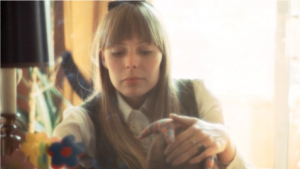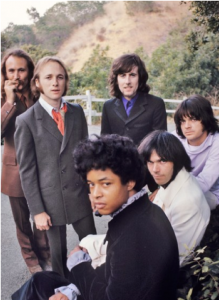dpreview.com– chulgor
Before I discuss the widely-known phenomenon of Laurel Canyon music, it’s important to dive into the very makeup of Laurel Canyon. What is Laurel Canyon? Where is Laurel Canyon? Well for starters, it was my home for about six years. I lived in a greenhouse underneath the green vines underneath the blue sky. It was the perfect intermediary between the hustle and bustle of the melting pot of L.A. and the numbing, yet invigorating sparseness of the Hollywood Hills. But musical legends have inhabited Laurel Canyon as well and that is what I want to focus on for now.
In Los Angeles during the mid-to-late ‘60s and ‘70s, music was superior; it was the driving force for innovation and euphoria. What we heard transcribed into what we felt, and it was a beautiful stepping stone to where we are now.
Growing up, my mother played Joni Mitchell—A LOT! I always left the room or rolled my eyes at her unwavering admiration for mediocracy. Clearly, I was an ignorant child. After I found myself listening to “Both Sides Now” off Joni Mitchell’s Both Sides Now album, I knew my mom’s persistent efforts to get me on the Joni-train finally worked. I was hooked. The soft yet compelling strength of her voice served as a cathartic transition into a deeper exploration and appreciation of music.

As my exploration of all things Joni deepened, I was introduced to an entirely new brand of music—new to me that is… Joni Mitchell was the gateway drug for the music of Laurel Canyon.
Laurel Canyon found itself entrenched in the counterculture movement in the ‘60s and ‘70s and housed many famous musicians. San Francisco was having its big moments and Laurel Canyon eventually had its own. The great Joni Mitchell, the Byrds, Frank Zappa, Jim Morrison, and The Eagles are all great representations of the sound associated with Laurel Canyon—but they’re not the only representations.

Henry Dilitz/MorrisonHotelGallery.com
(Other “Laurel Canyon” musicians include Glenn Frey, Carole King, Jackson Browne, Bonnie Raitt, Linda Ronstadt, James Taylor, Judy Collins, Lou Adler, and more…)
It was a San Francisco meets Woodstock Festival feel that encompassed the very LA flare most were chasing. Laurel Canyon was, and arguably still is, the opportune place for musicians, aspiring musicians, fans, and all others to gather and thrive. It was plagued by a contrasting union of both stabilizing innocence and hedonism. The Canyon transformed itself into a “golden age” made up of music, drugs, and love.
Joni Mitchell once said, “Ask anyone in America where the craziest people live, and they’ll tell you California. Ask anyone in California where the craziest people live, and they’ll say Los Angeles. Ask anyone in Los Angeles where the craziest people live, and they’ll tell you Hollywood. Ask anyone in Hollywood where the craziest people live, and they’ll say Laurel Canyon. And ask anyone in Laurel Canyon where the craziest people live, and they’ll say Lookout Mountain. So I bought a house on Lookout Mountain.”
This canyon holds the moment when Crosby, Stills, Nash, and Young finally began harmonizing together and all the moments thereafter. This is where Frank Zappa invited musicians such as Jimi Hendrix and Mick Jagger to party at his “Log Cabin” or where The Doors got inspiration for their songs, such as “Love Street”. This is the place where mystical, magical love and brilliance was found and acknowledged in many musicians.

Baron Wolman/Iconic Images
Whether it was the heavy drug use, or the general vicinity these like-minded musicians were in, Laurel Canyon helped integrate a mature and profound sensitivity and solicitude for music into the very basis of openly sharing one’s passions with friends, family, strangers, neighbors… you name it.
The idiosyncrasies of Laurel Canyon were seen in its inhabitants and the passion of the listeners was just as strong as those of the producers. These musicians’ social lives transcribed into influential and impactful substance for our social lives. They left behind a metaphorical footprint in the history of American music. The canyon was a sanctuary for musicians in the late 1900s and has since held onto such mystique and seductiveness.

Digital Colorization by Lorna Clark; From HollywoodPhotographs.com
Remember the stories of Graham Nash’s love for Joni Mitchell and the song, “Our House”, which he wrote about her Laurel Canyon house or Peter Tork (of The Monkees) living in the “party” house for his fellow musical neighbors. Remember the inspiration drawn from Laurel Canyon for the Mamas & the Papas’ song “Twelve Thirty (Young Girls Are Coming to The Canyon)” or Joni Mitchell’s song “Ladies of The Canyon”.

Photo: © Henry Dilitz/MorrisonHotelGallery.com.
Remember it all and appreciate Laurel Canyon, for Laurel Canyon birthed the greats and the musical memories painted within history.

Joel Bernstein
EMMA WEAVER | KXSU Music Reporter
